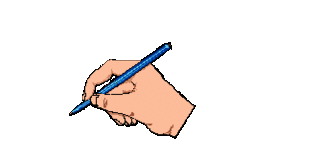Government help, anyone?
The Arroyo administration is desperate right now. The economic situation in the country is so bleak that any business enterprise that can help stimulate the economy, no matter how small or negligible, is being given attention.
In a news article appearing in the September 23, 2005 issue of the Manila Bulletin entitled: "DTI to harness "creative industries' potential" it is reported that the Department of Trade and Industry through Secretary Peter B. Favila, has announced that it will assist all small or undeveloped "creative enterprises" in the country by helping them develop into effective money-making ventures. Today's Filipino comics, in this blogger's opinion, is one such "creative enterprise" involving as it is, valuable intellectual properties through its characters, stories, and "art" that have become big business (in the print medium) in countries such as France, Japan, Italy, Taiwan, Hong Kong, England, and Korea. The full news article is as follows:
"Trade and Industry Secretary Peter B. Favila is pursuing ways to harness the potential of the so-called creative industry into a money-making field. Under Favila, the creative economy concept is now being pursued by the Center for International Trade and Exposition and Mission (CITEM). It also enlists all members of the creative community in entertainment, fashion, furniture, and software and animation in IT, among others, where intellectual property rights is a big issue.
"We are constantly assessing the various facets of the Philippine competitive edge towards formulating appropriate strategies that can enhance their contributions to economic growth and progress," Favila said.
Favila believes that the prospect of the Creative Industries as a driver for economic vitality is quite huge. "The DTI is confident in the value and strength of our human resources and their capacity for economically rewarding endeavors," he said.
The key, he said, is to be able to understand how creative professionals and industries function, and be able to develop a supportive infrastructure that would enable them to flourish and integrate into the mainstream of growth.
"Over the past years, we have learned that the distinctive elements that we Filipinos bring to the global market, creativity, artistry, craftsmanship, and innovativeness, are becoming more and more apparent and valuable factors that differentiate us from our neighbors and other nations in the international community," Favila stressed.
Among the success stories that validate the cause of developing Philippine Creative Industries include the achievements of Holy Cow! in the animation industry, and Movement 8 in design and crafts.
The progress that have been made in various fields of creativity is more by individual efforts rathen than an orchestrated, intentional design.
While there may be sectors that are more developed and more advanced in their support infrastructure than the rest, they are all still separate and uncoordinated sectors functioning on their own.
"The goal of the Creative Economy is to develop the environment that would make it possible for artists, creative individuals and innovators to produce their work with less impediments, and at the same time also have a means or an organized system through which to market their creations, and gain formal recognition from government and their respective sectors," Favila added.
The government must be able to build its case so that strategic investments from government and the private sector can be channeled towards developing a truly Creative Philippines. (BCM)"
For those seriously interested in exploring the possibility of promoting and developing our dismal comics scene into an "industry" with the help (or "intervention" depending on what side of the fence you're on) of the government, now is the chance.

0 Comments:
Post a Comment
<< Home